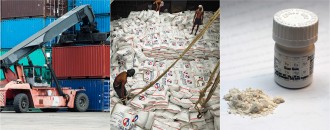
Direct Port Delivery: To whose advantage?
By Abin Daya The Government is working to improve the ‘ease of doing business’ ranking of the country, and one of the areas of focus is the time it takes for manufacturers to get their imported raw materials and components, out of the port and into their factories. The numbers are not very encouraging, and it currently takes about 9-10 days to get a container out of the port and on its way to the manufacturer. With a view to improving this, the Direct Port Delivery arrangement was started in 2016. How is it faring? Please read on in this week’s update. The most important story of this week, definitely, is the 25 bps cut that the Monetary Policy Committee permitted on ...
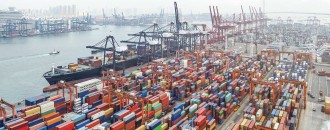
Shipping sector gets $636 mn under Make in India
The Dollar Business Bureau Under the ‘Make in India’ scheme, the government has received $636.17 million (around Rs 4,272 crore) worth of investments in the shipping sector. “An amount of $636.17 million has been received up to May, 2016 in the Shipping Sector under Make in India initiative since its inception in September 2014,” Nitin Gadkari, Minister for Road Transport, Highways and Shipping, said in a written response to the Lok Sabha. Under the Ease of Doing Business (EoDB) and Trading Across Borders, the government has taken many initiatives in order to simplify the process of cargo clearance, to cut dwell time and congestion at key ports, the Minister added. These initiatives include extending facility for direct port delivery to all ACP (accredited client programme) clients, integrating ...
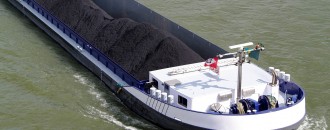
India's thermal coal imports up 1.3% in April-May
The Dollar Business Bureau India's thermal coal imports through 12 major public sector ports increased 1.3% at 18.33 million MT during April-May this year, from 18.09 million MT in the corresponding period previous year, as per the data released by Indian Ports Association on Wednesday. However, coking coal imports have decreased 8.4% to 8.7 million MT in the period of review against 9.5 million MT during the same period last year, according to the data. During the first two months of this financial year, Paradip port handled the maximum share of thermal coal imports at 5.1 million MT with 4% growth from 4.9 million MT in the previous year period. Another port in the east coast of India, Kolkata port has seen 17.8% decline ...
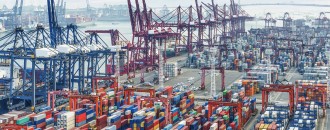
JNPCT handles highest container traffic in Apr 2016
The Dollar Business Bureau JNPCT (Jawaharlal Nehru Port Container Terminal), one of JN Port’s three terminals, has handled 133,195 TEUs (twenty-foot equivalent unit) in April this year. Since its establishment, this is the highest traffic handled by the terminal in a month. A comparison on month-to-month basis shows that the throughput in April 2016 has witnessed a growth rate of 35 percent than the same month last year. In addition, during the year 2015-16, the port registered a growth of 12 percent over the average cargo handling on monthly basis. The previous highest traffic handled by the terminal was 132155 TEUs, during the month of August 2015. JN Port, the biggest container handling port in India, handles around 56 percent of the containerised cargo ...

US, EU question Indias apple import policy
The Dollar Business Bureau European Union and the United States raised concerns over India’s recent policy to limit the entry of imported apples to only the Jawaharlal Nehru Port (Nhava Sheva) in Navi Mumbai and questioned India of distorting trade compliance under its WTO commitments. They requested India to give further information on the consequences if apples are imported through other ports, i.e. Chennai, Kolkata and Krishnapatnam. “The US meanwhile said the measure has so far "had an impact on trade" and took issue over the lack of a comment period before the new policy was implemented. New Zealand, Chile, and Australia also echoed these concerns,” the global body said in a statement. In reply, India said that the measure doesn’t ...
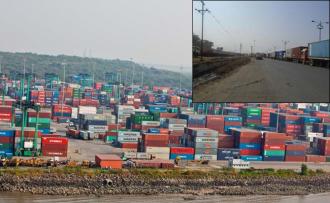
Blackout at JNPT on May 1, traders worried about reefers
Sisir Pradhan | The Dollar Business Movement of export and import containers are likely to be affected at India’s most busiest container port, Jawaharlal Nehru Port (JNP) in the coming days as the port authorities have announced a total blackout for maintenance work on May 1. The worst hit are likely to be reefer containers as diesel motor powered generators will feed only 190 numbers of refrigerated cargo containers at the port. Notably, the port is facing congestion issues as Gateway Terminals India (GTI), which handles around 20% of India’s total container traffic, closed its south entrance gate for export cargo starting from Sunday, 12th April 2015. Read here: JNP, which handled 4.16 million TEUs of container traffic ...
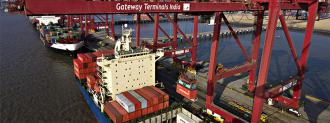
APM Terminals Mumbai handles record 2.01 mn TEUs in FY2014-15
The Dollar Business Bureau APM Terminals Mumbai one of three terminals currently operating at Jawaharlal Nehru Port (JNP), is India’s largest container port, accounting for 45% of JNP’s throughput, and approximately 20% of India’s total container traffic. Recently, the Terminals established a new record for Indian ports by handling a total of 2.01 million TEUs (twenty-foot equivalent unit) during the Fiscal Year of 2014-15, from April 1, 2014 to March 31, 2015. The growth in the container traffic was achieved mainly due to the deepening of the Mumbai harbour channel in 2014 combined with an increase in the vessel size and container volumes. The increase, however, is straining the existing Indian port infrastructure, which must also deal with regulatory issues ...
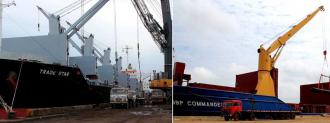
Krishnapatnam Port plans to become Indias largest container terminal by 2020
Sisir Pradhan | @TheDollarBiz Krishnapatnam Port, on the eastern coast of India, plans to become the single largest container terminal in India by FY2020 with a total annual capacity of 6.0 million TEUs, up five-times from the current capacity of around 1.2 million TEUs per annum, Krishnapatnam Port Company Limited CEO Anil Yendluri told The Dollar Business. According to the Ministry of Shipping, global container throughput will reach 1 billion TEUs by 2020 and India’s container traffic (excluding transshipment) is likely to grow between 18% and 23% in the next 4-5 years. The growth in container traffic exhibits a strong linkage to GDP growth and most developing container traffic at Indian ports has registered growth at a CAGR of ...


